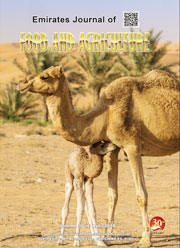NODULE FORMATION, DISTRIBUTION AND SYMBIOTIC EFFICACY OF VIGNA UNGUICULATA L. UNDER DIFFERENT SOIL SALINITY REGIMES
DOI:
https://doi.org/10.9755/ejfa.v22i4.4875Keywords:
Cowpea, nodulation, rhizobium, root system, salt stress, symbiotic efficacyAbstract
Rhizobium-legume symbiosis is one of the most well-established symbiotic nitrogen fixing system for agronomic studies. The current study aimed to test the hypothesis that screening for salt-tolerant rhizobial strains or salt-tolerant cultivar does not necessarily promise a salttolerant symbiotic system, as the symbiotic system is more sensitive to salt stress than the bacterium and/or the plant. In fact, the current study reveals that there is a decrease in salt tolerance of the symbiotic system by 1 dS/m , and also that there is a gradual shift in the spatial distribution of the nodules from the primary roots to the secondary roots under increased salt levels, and is time-dependant. Thus, the current study confirms that there is a need to screen for salt-tolerant symbiotic Rhizobium-legume system for producing efficient root nodules, thereby an efficient repository for nitrogen fixation










 .
. 